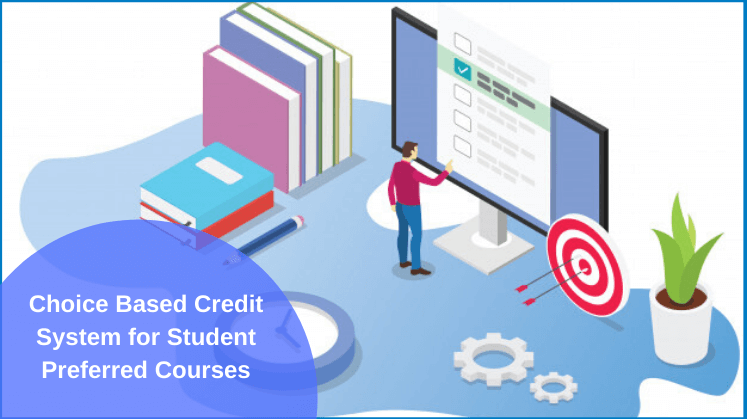
“Will I be able to have a good career after completing my degree?”
Every student wonders what opportunities will he/she get after graduating – after all, the fees of colleges are continuously rising! Students pay a whole lot of their parent’s hard-earned money and still, they get the tag of being – UNEMPLOYED! The real culprit fueling the unemployment ratio in India is the low quality of education. Even the ones who are employed are getting paid peanuts considering the cost of their “Degree”. Technology has reached par excellence and still, the educational institutions serve possibly a decade old technology-related curriculum! Despite all this, institutions give false narratives of 100% of students being placed in top-class companies. If this would have been the case, then there won’t be headlines of highly qualified engineers competing for clerical posts!
To reflect the technological change & address these issues by maximizing the value of education for students, the UGC- University Grants Commission, has introduced the concept of CBCS or Choice Based Credit System. CBCS allows students to learn subjects of their own choice and develop career-oriented skills.
How Does CBCS Work?
CBCS aims at translating the hard-work of students into gainful employment. The following elements elaborate on how the CBCS system works…
- Choice of Subjects
The students opting for CBCS get a provision of learning three categories of subjects –
- Core: Subjects that fall under this category are mandatory. Students compulsorily need to study the core subjects.
- Elective: These subjects are from the same field that students belong to. They get a choice to opt for any of the subjects within their department.
- Foundation or Ability Enhancing Courses: These courses are interdepartmental. For instance, a student pursuing engineering from the mechanical department can learn subjects of IT to broaden their horizons of knowledge & skills.
- Semester Wise Assessment
The assessment of the CBCS system is performed semester wise. A student can enter the next semester as soon as he/she completes their curriculum. For instance, a student studying electronics engineering doesn’t need to dedicate the tenure of fixed four years. Each semester usually comprises of approximately 18 weeks. Plus, the faculty gets the liberty to design the curriculum & assign credits to it.
- Credit System
Every single course carries a certain “credit”. Student learning & passing the course successfully earn the aforementioned credit. Students can learn as many courses as they want in a semester and earn credits to build a strong academic portfolio.
- Credit Transfer
Credit transfer is the best perk that student gets by opting for CBCS system. In certain cases, when the student is unable to attend the exam, the reason could be any, let’s say due to health issues if the student gets restricted, then there’s absolutely no need to worry about anything. The student can compensate for the credits by forwarding the courses in the upcoming semester. He won’t get a report card saying “Fail”!
Alongside this, the credits can be transferred to another college or university as well. If students want to change their college or university, their credits will be transferred & they can continue their without any problem.
- Continuous Evaluation
With the transparent credit based education, not just the faculty, but also the student gets the chance to evaluate their skills. It significantly boosts the confidence of students and further pushes them to perform better.
- Grading Pattern
The regular grading pattern is replaced by the 10-points CBCS grading pattern as follows-
- “Ab” - Absent - 0
- “F” – Fail - 0
- “P” – Pass - 4
- “C” – Average - 5
- “B” - Above Average - 6
- “B+” -Good - 7
- “A” - Very Good - 8
- “A+” – Excellent - 9
- “O” – Outstanding - 10
Defining the Credits: Total credits per subject are counted on the basis of Lecture (L), Practical (P), and Tutorial (T).
In a nutshell, with the choice based credit system, students can draw the given advantages.
- ‘Cafeteria’ approach to choose new courses
- Interest-driven learning instead of traditional learning pattern
- Moves the spotlight onto a student’s skill development
- Interdisciplinary approach improving career opportunities
Considering these merits, the implementation of CBCS is a promising step towards improving student performance & success. It will surely open the door to new opportunities that students deserve instead of settling for a mediocre career just for the sake of employment!
Recent
- NEP 2020 & College Autonomy: Complete Guide
- ICT For Higher Education - Smart Move Towards Online Teaching And Learning
- Online Examination Software For Post-Exam Analysis, Better Learning Outcomes & Decision Making
- The Best School Management System To Enhance Students Learning Experience
- Complete Guide To Learning Outcome Based Curriculum Framework (LOCF) - Part 1
- How To Manage Exam Schemes, Rules & Result Processing Online
- How To Manage College Applications, Merit List Generation & Online Admissions
- Complete Guide To The National Board Of Accreditation (NBA Accreditation)
- The Ultimate Checklist To Safeguard Your University’s Data
- Top 3 Reasons Why Higher Education Institutions Should Focus On Achieving Autonomy
- The Beginner’s Guide To Outcome Based Education Process (Part 2)
- Tips to Gear up Your Children To Return Back to School after Lockdown
- National Education Policy: All You Need to Know about NEP 2020 for Schools – Part 1
- Why Educators Need to Put Maslow Before Bloom
- Five Things You Should Know About Remote Learning as an Educator
- What is e-learning?
- Top Advantages of Online Assessment Tools
- What Is The NBA And Why Does It Matter?
- How Can Colleges Be Prepared for NAAC Peer Team Visit?
- ICT for Higher Education - Smart Move towards Online Teaching and Learning
- How to implement Choice Based Credit System?
- Why Online Fee Collection Software is a Must for Educational Institutions


